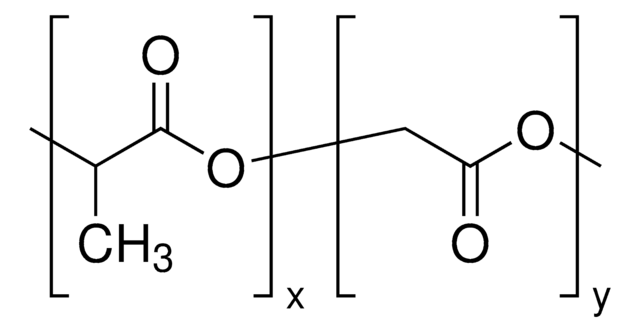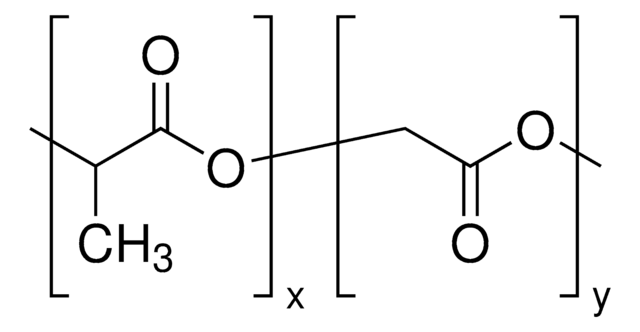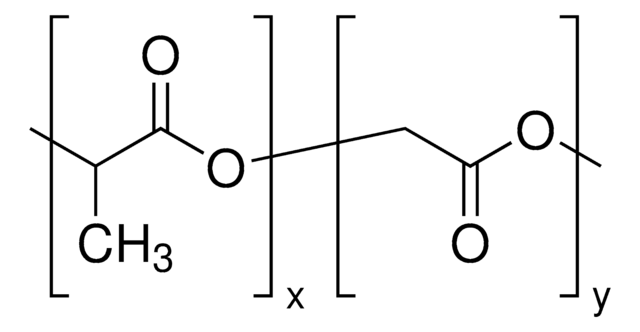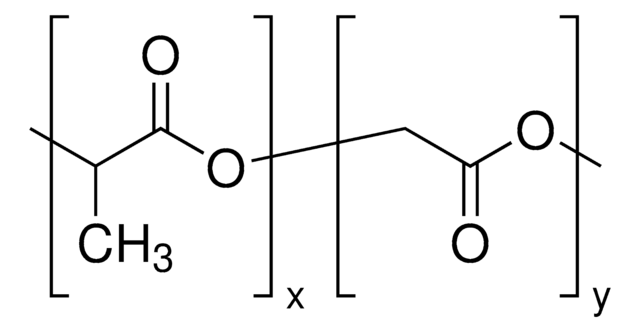Products may be shipped at a different temperature than the recommended long-term storage temperature. If the product quality is sensitive to short-term exposure to conditions other than the recommended long-term storage, it will be shipped on wet or dry-ice. If the product quality is NOT affected by short-term exposure to conditions other than the recommended long-term storage, it will be shipped at ambient temperature. As shipping routes are configured for minimum transit times, shipping at ambient temperature helps control shipping costs for our customers. For more information, please refer to the Storage and Transport Conditions document: https://www.sigmaaldrich.com/deepweb/assets/sigmaaldrich/marketing/global/documents/316/622/storage-transport-conditions-mk.pdf
推薦產品
儲存類別代碼
11 - Combustible Solids
水污染物質分類(WGK)
WGK 3
閃點(°F)
Not applicable
閃點(°C)
Not applicable
個人防護裝備
Eyeshields, Gloves, type N95 (US)
從最近期的版本中選擇一個:
分析證明 (COA)
客戶也查看了
-
How is shipping temperature determined? And how is it related to the product storage temperature?
1 answer-
Helpful?
-
-
How can I determine the shelf life / expiration / retest date of this product?
1 answer-
If this product has an expiration or retest date, it will be shown on the Certificate of Analysis (COA, CofA). If there is no retest or expiration date listed on the product's COA, we do not have suitable stability data to determine a shelf life. For these products, the only date on the COA will be the release date; a retest, expiration, or use-by-date will not be displayed.
For all products, we recommend handling per defined conditions as printed in our product literature and website product descriptions. We recommend that products should be routinely inspected by customers to ensure they perform as expected.
For products without retest or expiration dates, our standard warranty of 1 year from the date of shipment is applicable.
For more information, please refer to the Product Dating Information document: https://www.sigmaaldrich.com/deepweb/assets/sigmaaldrich/marketing/global/documents/449/386/product-dating-information-mk.pdfHelpful?
-
-
Please give me the detailed solubility profiling of this product with the solvent: Acetonitrile and Methanol
1 answer-
This product is not tested for solubility. However, other sources report that this material is soluble in acetone at 5 wt%. Other solvents listed are dichloromethane, tetrahydrofuran, ethyl acetate, and chloroform. No rate is provided. This information has not been validated.
Helpful?
-
-
What is the glass transition temperature of Product P2191, Poly(D,L-lactide-co-glycolide)?
1 answer-
The glass transition is 45-50°C; the melting point is amorphous.
Helpful?
-
-
What is the viscosity of Product P2191, Poly(D,L-lactide-co-glycolide)?
1 answer-
The viscosity of this product is lot-specific and can be found in the Certificate of Analysis.
Helpful?
-
-
What is the Department of Transportation shipping information for this product?
1 answer-
Transportation information can be found in Section 14 of the product's (M)SDS.To access the shipping information for this material, use the link on the product detail page for the product.
Helpful?
-
-
Product P2191, Poly(D,L-lactide-co-glycolide), is a compound that is useful as a time-release agent in delivery systems such as herbicides, pesticides, and drugs. What is the rate of degradation?
1 answer-
The higher the lactic acid to glycolic acid ratio, the slower is the degradation rate of the polymer. Molecular weight of the polymer is a contributing factor to the degradation; the lower the molecular weight, the faster the degradation rate of the polymer.
Helpful?
-
Active Filters
我們的科學家團隊在所有研究領域都有豐富的經驗,包括生命科學、材料科學、化學合成、色譜、分析等.
聯絡技術服務








